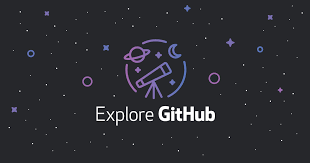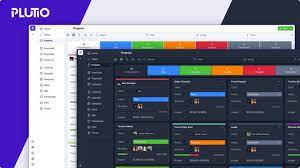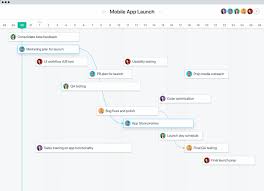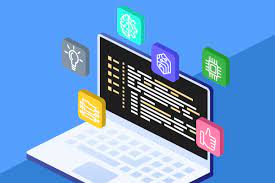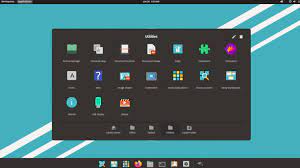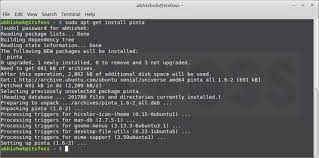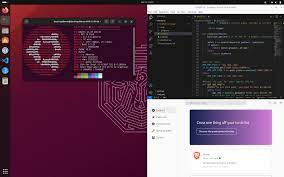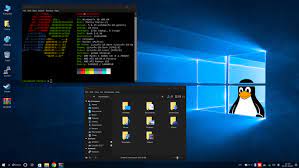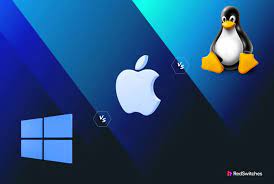Exploring the Boundless World of GitHub Open Source
The Power of GitHub Open Source
GitHub has become synonymous with open-source development, providing a platform where developers from around the world can collaborate, share code, and build amazing projects together. With millions of repositories covering a wide range of technologies and applications, GitHub has revolutionised the way software is developed and distributed.
Collaboration at its Best
One of the key strengths of GitHub is its ability to facilitate collaboration among developers. By hosting code repositories in a centralised location, GitHub enables multiple contributors to work on the same project simultaneously. This collaborative approach not only speeds up development but also encourages knowledge sharing and innovation.
Transparency and Accountability
Open-source projects on GitHub are built on transparency and accountability. Anyone can view the code, suggest improvements, or report issues. This level of openness fosters trust within the community and ensures that projects are continuously improved through feedback and contributions from users worldwide.
Empowering Developers
GitHub empowers developers by providing them with a platform to showcase their skills, collaborate with others, and contribute to projects that align with their interests. Whether you’re a seasoned developer looking to share your expertise or a newcomer eager to learn and grow, GitHub offers a welcoming environment for all skill levels.
Innovation Through Open Source
Open source on GitHub has been a driving force behind some of the most innovative technologies in recent years. From cutting-edge machine learning algorithms to groundbreaking web frameworks, open-source projects on GitHub have pushed the boundaries of what is possible in software development.
Joining the Community
Whether you’re an individual developer or part of a larger organisation, GitHub welcomes you to join its vibrant community of open-source enthusiasts. Explore existing projects, start your own initiatives, or simply connect with like-minded individuals who share your passion for technology.
Maximising Your GitHub Open Source Project: 8 Essential Tips for Success
- Choose a meaningful and descriptive repository name.
- Write clear and concise documentation to help others understand your project.
- Use branches to work on new features or bug fixes without affecting the main codebase.
- Regularly update your repository with new changes and improvements.
- Encourage collaboration by accepting contributions from other developers.
- Add an open source license to specify how others can use your code.
- Create issues to track bugs, feature requests, and tasks for your project.
- Promote your open source project through social media and developer communities.
Choose a meaningful and descriptive repository name.
When working on GitHub open source projects, it is essential to choose a meaningful and descriptive repository name. A well-chosen name not only reflects the purpose and content of the project but also helps others easily identify and understand its scope. By selecting a clear and concise repository name, developers can enhance collaboration, attract contributors, and maintain clarity throughout the project’s lifecycle. It sets the tone for the project and serves as a valuable communication tool within the open-source community.
Write clear and concise documentation to help others understand your project.
When engaging in open-source development on GitHub, it is crucial to write clear and concise documentation to aid others in comprehending your project. Well-crafted documentation serves as a roadmap for users, enabling them to navigate your codebase, understand its functionalities, and contribute effectively. By providing detailed explanations, examples, and instructions, you not only enhance the accessibility of your project but also foster a collaborative environment where knowledge sharing thrives. Remember, clarity in documentation is key to ensuring that your project is approachable and beneficial to a wider audience of developers.
Use branches to work on new features or bug fixes without affecting the main codebase.
Utilising branches in GitHub for working on new features or bug fixes is a highly effective strategy that allows developers to make changes without impacting the main codebase. By creating separate branches, developers can isolate their work, experiment freely, and collaborate with team members on specific tasks. This approach not only enhances productivity but also ensures that changes can be thoroughly tested and reviewed before being merged into the main project, maintaining the integrity and stability of the codebase. Branching in GitHub provides a structured and efficient workflow for developers to implement enhancements and resolve issues while keeping the main codebase clean and functional.
Regularly update your repository with new changes and improvements.
To maximise the effectiveness of your open-source project on GitHub, it is crucial to regularly update your repository with new changes and improvements. By staying proactive in incorporating the latest enhancements and fixes, you not only ensure that your project remains relevant and functional but also demonstrate your commitment to its ongoing development. Regular updates not only attract potential contributors but also help maintain a healthy and engaged community around your project, fostering collaboration and innovation. Keep your repository fresh with new features and enhancements to keep your project vibrant and responsive to the evolving needs of users and developers alike.
Encourage collaboration by accepting contributions from other developers.
Encouraging collaboration by accepting contributions from other developers is a fundamental principle of open-source development on GitHub. By welcoming input and feedback from a diverse community of developers, projects can benefit from a wide range of perspectives, expertise, and ideas. Embracing contributions not only fosters a sense of shared ownership and responsibility but also leads to the creation of more robust and innovative solutions. Through collaboration, developers can learn from each other, build upon existing work, and collectively drive the evolution of projects towards excellence.
Add an open source license to specify how others can use your code.
When sharing your code on GitHub open source projects, it is essential to add an open-source license to specify how others can use your code. By including a license, you provide clear guidelines on how your code can be shared, modified, and distributed by others. This not only protects your work but also promotes collaboration and ensures that the open-source community thrives on principles of transparency and respect for intellectual property rights. Be sure to choose a license that aligns with your intentions for sharing your code and encourages others to contribute to and benefit from your project.
Create issues to track bugs, feature requests, and tasks for your project.
Creating issues on GitHub is a valuable practice for tracking bugs, capturing feature requests, and managing tasks within your project. By documenting these issues, you establish a clear record of what needs to be addressed, enabling better organisation and prioritisation of work. Issues serve as a centralised communication channel for project contributors to discuss and collaborate on solutions, fostering a more efficient and transparent development process. Whether it’s identifying and resolving bugs, implementing new features, or assigning tasks to team members, leveraging the issue tracking feature on GitHub can greatly enhance the productivity and effectiveness of your project.
Promote your open source project through social media and developer communities.
To maximise the visibility and impact of your open source project on GitHub, it is essential to leverage the power of social media and developer communities. By actively promoting your project through platforms like Twitter, LinkedIn, and Reddit, you can reach a wider audience of potential users and contributors. Engaging with developer communities on forums such as Stack Overflow or Hacker News can also help generate interest and feedback for your project. Building a strong presence on social media and participating in relevant discussions within developer communities can significantly boost the success and growth of your open source project.



